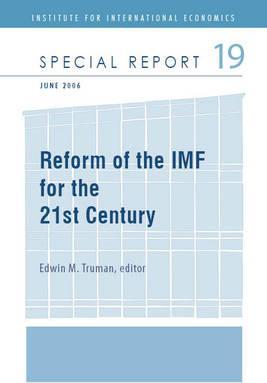Based on a conference held in September 2005 on the future of the International Monetary Fund, this important new book includes an overview of the challenges facing the IMF today. In addition, the authors offer a wide range of views on four areas: the international monetary system and the IMF (with an emphasis on enforcing and reforming the rules), governance (including representation), financial resources (the need for additional resources and how they should be supplied), and financing (including the role of IMF financing and the need for new facilities).

